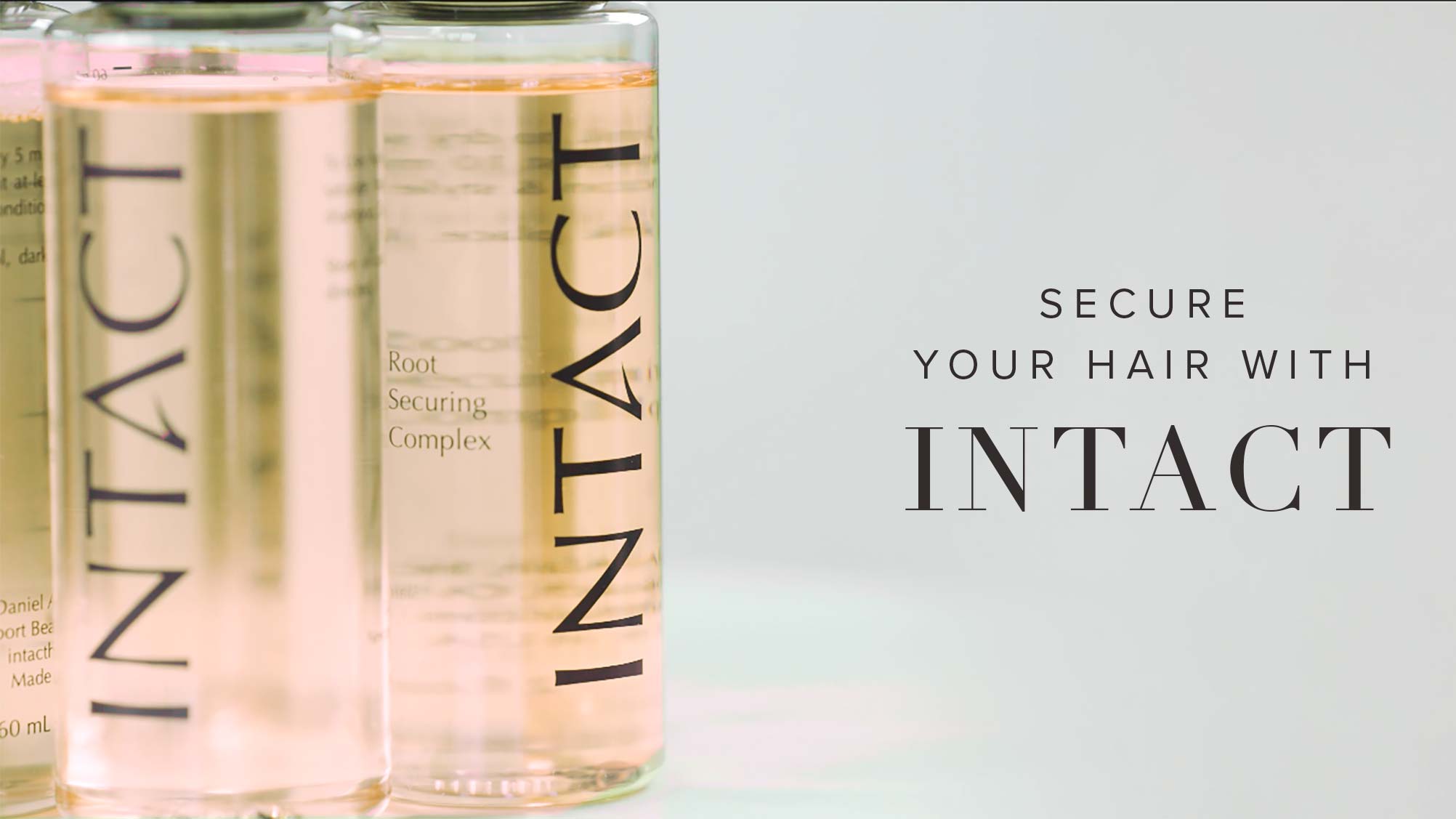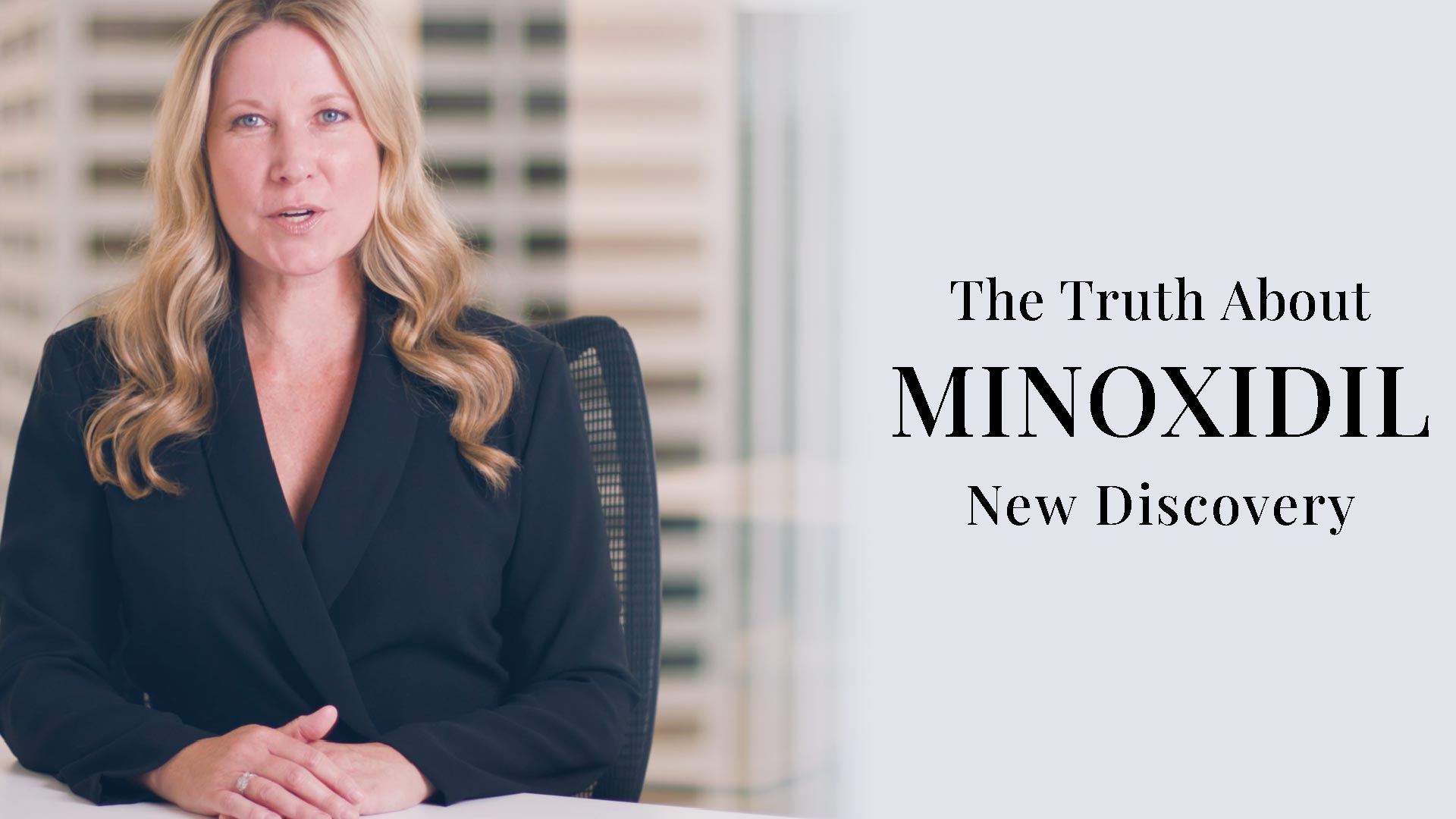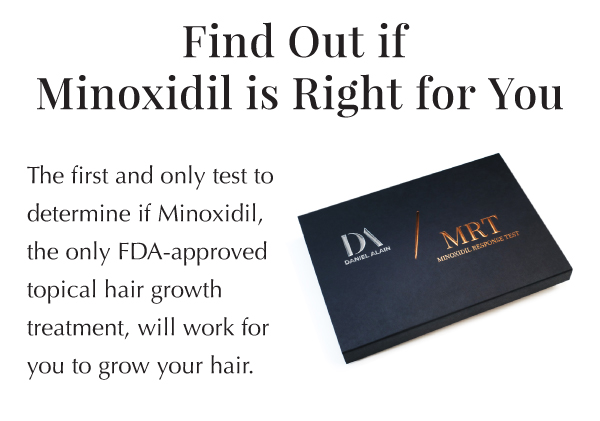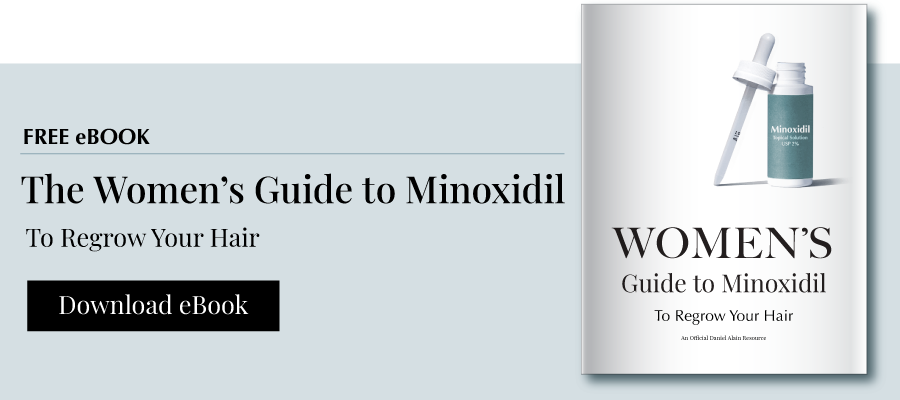Genetic Hair Loss in Females

Hereditary hair loss may be a shock as the first symptoms start to show. For many women, they may have had an indication the problem might affect them if they’ve watched a parent battle hair loss. Despite its prevalence, it’s one of the most challenging types of hair loss to manage.
Also known as androgenetic alopecia or female pattern hair loss, this genetic hair loss condition is the most common, affecting nearly half of all women by age 50.
Naturally, most women struggle to manage and accept hair loss, making this a difficult and emotional experience. Hair loss is often equated with a loss of confidence and sense of self, triggering a range of feelings from shame and anger to fear and even depression.
One emotion that’s worth holding onto? Hope.
Although you can’t prevent hereditary hair loss, there are actions you can take to slow down the process and improve your hair’s appearance. More importantly, women experiencing genetic hair loss should remember that they’re never alone on this difficult journey.
At Daniel Alain, we understand the emotional impact of female pattern hair loss. That's why we’ve made it our mission to provide effective, empowering solutions to women struggling with all forms of hair distress. Our clinically-proven hair loss treatments, such as INTACT and Minoxidil, can help you achieve the natural hair you desire and bring back the confidence you deserve.
But when it comes to finding the right hair loss solutions, knowledge is power.
That’s why, today, we’re breaking down the ins and outs of female pattern hair loss, common hereditary hair loss treatments, and why Daniel Alain’s hair solutions are the ultimate choice for breathing new life into your natural hair.
What is Female pattern hair loss?
As discussed earlier, female pattern hair loss is one of the most common forms of hair loss in women. It’s typically characterized by a gradual thinning of hair along the scalp, usually beginning around the age of 40.
As for what causes female pattern hair loss, it’s believed to be related to a combination of genetics and hormones.
Studies show that hereditary hair loss is often triggered by sensitivity to a hormone called dihydrotestosterone (DHT). DHT is a byproduct of the male hormone testosterone, which is present in both sexes. In women with female pattern hair loss, the hair follicles are particularly sensitive to DHT, causing them to shrink and eventually stop producing new hair.
As far as genetics, this type of hair loss can be inherited from either parent's side of the family.
Besides genetics and hormones, other potential causes for female pattern hair loss include:
- Nutritional deficiencies
- Stress and anxiety
- Underlying medical conditions
- Response to certain medications
- Traction alopecia resulting from excess tension on the hair
- Environmental factors
- Pregnancy
How do you know if your hair fall is hereditary? Let’s explore the signs of female pattern hair loss.
FEMALE PATTERN HAIR LOSS Symptoms
Signs of female hereditary hair loss are quite different from what men experience. While male pattern hair loss typically starts showing along the hairline and temples, women initially experience a gradual thinning of hair. This decreases hair volume and thickness, making strands more prone to shed and breakage, especially while brushing, washing, or styling.
Another of the first signs of female pattern hair loss is a widening part line. This results from gradual hair thinning at the part, progressing outwards along the crown. The frontal hairline is typically unaffected, with the exception of normal recession due to aging.
Unlike in men, female genetic hair loss rarely progresses to total or near total baldness. Instead, women will notice a “Christmas tree pattern” of hair loss along the part-line accompanied by thinner hair strands overall.
So what’s the best genetic hair loss treatment? Ultimately, it’s going to depend on each individual. But let’s touch on some of the most common ones.
How to Stop Genetic Hair Loss
Unfortunately, you can’t change your DNA, but there are some things you can do to slow down hereditary hair loss, protect thinning strands, and improve hair’s overall health and appearance.
Some of the most popular genetic hair loss treatments are:
Platelet-Rich Plasma (PRP) Hair Loss Therapy
Platelet-Rich Plasma (PRP) Therapy is a minimally-invasive procedure that uses your own blood to promote hair growth. The process involves drawing the patient’s blood and separating the platelet-rich plasmas, which are later injected into the scalp. The platelets in the plasma release growth factors that promote hair growth and thickening.
One of the biggest disadvantages of PRP therapy is that multiple sessions are usually needed to see results. It also has a high cost, making this treatment quite expensive. Additionally, there is a risk of pain, swelling, and infection at the injection sites.
Furthermore, PRP therapy may not be effective for everyone, and some individuals may not see any improvement at all.
Hair Transplant and Restoration
Hair transplant and restoration is a surgical procedure that relocates hair from one part of the scalp (donor site) to another part of the scalp (recipient site).
The most common methods of hair transplantation are called Follicular Unit Transplantation (FUT) and Follicular Unit Extraction (FUE). These involve removing follicular units (small, naturally occurring groupings of hair) from a donor site and then transplanting them to the recipient site.
Hair transplant and restoration can be effective for women experiencing hereditary hair loss, as well as hair loss brought on by injury or certain medical conditions. However, it's important to note that results vary, often taking several months for newly transplanted hair to grow.
In addition to being an expensive treatment with many side effects, not everyone qualifies for hair transplantation. For example, women experiencing hair thinning or loss on the sides or back of the scalp wouldn’t be candidates, as these are the donor locations for the procedure to be effective.
Preventative Hair Loss Care
For those who prefer a more holistic approach to tackling genetic hair loss, preventative hair loss care could be the answer. This is the practice of taking care of your hair and scalp to prevent hair fall and promote healthy hair.
Some of the key components of preventative hair loss care include:
- Eating a well-balanced diet rich in vitamins and minerals, such as iron, zinc, and Vitamin D, which are essential for hair health.
- Maintaining a healthy lifestyle, consisting of regular exercise, adequate sleep, and stress management.
- Taking appropriate care of your hair daily, which includes washing and conditioning your hair, as well as avoiding harsh chemical processing.
- Gentle hair care, like avoiding tight hairstyles, using a wide tooth comb, and avoiding excessive heat styling.
While non-invasive and low-risk, preventative hair loss care may not be able to regrow hair that’s already been lost. It also requires commitment, consistency, and an abundance of patience with no guarantee.
As you can see, the effectiveness, invasiveness, and cost of these procedures vary. Fortunately, they aren’t your only options.
The Best Female Pattern Hair Loss Treatments
For women who’d rather skip the invasive procedures or uncertainties and invest in hereditary hair loss treatments that actually deliver on their promises, we’re proud to offer alternative solutions that don’t involve needles or endless wondering and are guaranteed to give you the results you desire.
As pioneers in the hair solutions industry, Daniel Alain provides only clinically-proven treatments that fortify your existing hair and combat hair loss with evidence-based solutions that do exactly what they say they will.
Our groundbreaking, anti-hair shedding treatment, INTACT, and Minoxidil Response Test offer a comprehensive approach to hair care, targeting both the internal and external factors that contribute to hair loss in women.
Let’s take a closer look at each, shall we?
INTACT Root Securing Complex

Sick of waiting around, endlessly wondering if your genetic hair loss treatment is actually working? INTACT Anti Hair Shedding Treatment is a revolutionary, clinically-proven treatment guaranteed to reduce hair shedding in just 30 minutes.
How does INTACT deliver on such a big promise? The magic lies in our patented PiliLock® Sevilla Orange Complex, scientifically proven to stimulate the muscles in your follicles to grip hair at the root and keep it where it belongs — on your scalp.
With consistent use, INTACT improves your hair’s overall health and appearance, making it stronger, thicker, and more resilient to hair shed.
Created in a lab by our team of dermatologists and scientists, INTACT is color-safe, vegan-friendly, and contains no parabens, silicones, SD-alcohol, mineral oil, artificial dyes, and gluten.
Fast, easy, effective, and safe for all hair types? It’s no wonder INTACT is hairdressers’ new secret weapon.
Minoxidil and ReGrowth System

Also known by the trade name Rogaine®, Minoxidil is the only FDA-approved topical hair regrowth treatment on the market.
Minoxidil stimulates the blood vessels in your scalp to boost their delivery of oxygen and nutrients to your hair follicles. These essential growth agents extend your hair’s anagen (or growth) phase of the hair growth cycle — triggering the regrowth of strong, healthy hair.
With patience and consistency, you can experience new growth and fuller hair in six to nine months.
To determine your dose and scalp responsiveness, you’ll need to take the Minoxidil Response Test before starting treatment.
Minoxidil Testing

Minoxidil only promotes hair regrowth in users with sufficient levels of the enzyme Sulfotransferase (SULT1A1) in the scalp, which isn’t a universal characteristic.
The Minoxidil Response Test is the best way to determine if you have enough SULT1A1 enzyme activity in your scalp for Minoxidil to be as effective as intended. Just submit a few hair samples for analysis to our CLIA-certified lab, and you’ll have your answer in one to two weeks.
Once you get your results, you’ll know with confidence if you should move forward with Minoxidil.
Fight Hereditary Hair Loss and Win with Daniel Alain.
When it comes to hair loss, we know that every strand counts. That’s why we are so proud to offer clinically-proven solutions that don’t just combat hereditary hair loss but truly give you a fighting chance to restore your hair’s health, appearance, and, more importantly, your sense of beauty.
Hope is on the horizon — let Daniel Alain help you achieve the strong, beautiful hair you desire today.
- Elevate your hair care routine with Italian-made, artisanal hairbrushes specially designed to protect your hair’s integrity while keeping it beautiful.
- Discover how women like you have transformed their hair loss experience and revived their confidence with the help of Daniel Alain.
- Still unsure which solution is ideal? Chat with our hair experts now and get the answers you need to move forward with the right hair solution.
book a free consultation
Our stylists will help you find the right hair loss solution just for you.

Frequently Asked Questions
What does female pattern hair loss look like?
Female pattern hair loss (or androgenetic alopecia) is usually characterized by gradually thinning the hair along the scalp. It often starts at the part line, with hair getting progressively thinner and widening the part line. The hairline usually stays intact, but the hair near the hairline can also get thinner. While the amount of hair loss can vary, it’s typically diffuse, meaning hair is lost evenly all over.
What are some early signs of female pattern hair loss?
Some early signs of female pattern hair loss include:
- Gradual thinning of hair on the scalp, particularly at the part line or crown
- Widening of the part line
- Decrease in volume or thickness
- Excessive breakage or brittleness
- Excessive shedding or hair fall
At what age does hereditary hair loss start?
Hereditary hair loss can start at any age. While men typically start seeing signs in their late teens or early twenties, it can be a bit more variable for women. For women, the onset of genetic hair loss can occur at any time from their teens to their seventies. However, it's more common for women to experience it in their 40s or 50s.
Can genetic hair loss be prevented?
No — Since it’s a genetic condition, hereditary hair loss cannot be fully prevented, but there are steps you can take to delay the process and improve the appearance of hair.
How do you stop female genetic hair loss?
Some steps you can take to slow down hereditary hair loss and improve your hair’s appearance are:
- Minimizing damage to your hair from styling and chemical treatments
- Eating a healthy, balanced diet that includes all the essential vitamins and minerals for optimal hair health
- Avoiding hairstyles that pull on your hair or put excessive stress on the hair follicles
- Managing stress reduces the production of the hormone cortisol, which can contribute to hair loss.
- Incorporating hair growth supplements specifically formulated for hair loss issues
- Regularly applying hair-fortifying products, such as INTACT Anti Hair Shedding Treatment
- Using Minoxidil, a topical medication for boosting hair growth.
What causes excessive hair shedding in females?
A variety of factors can trigger excessive hair shedding in women. The most common causes are:
- Hormonal fluctuations
- Stress
- Nutritional deficiencies
- Certain medical conditions
- Certain medications
- Aggressive hairstyling or harsh chemical treatments
How can I stop shedding hair?
INTACT Anti Hair Shedding Treatment is the only clinically-proven treatment guaranteed to reduce hair shedding with the very first application. In addition to retaining hair strands, it provides deep conditioning, boosts volume, and nourishes your scalp.
Is INTACT safe to use on my hair?
Yes — INTACT is made with safe, natural ingredients free of sulfates, parabens, silicones, oils, SD-alcohol, artificial dyes, and gluten. It’s vegan-friendly, color-safe, and works with all hair types.
Can INTACT regrow hair?
No — INTACT is designed to reduce hair shedding and fortify your existing hair. It does not impact your hair’s natural growth cycle or trigger regrowth.
How can a woman stop hair loss and regrow hair?
The only product approved by the FDA for regrowing hair in women (and men) is Minoxidil (Rogaine®). When used as directed, you can experience regrowth in six to nine months.
Does Minoxidil work for everyone?
Yes, but treatment may vary. For more Minoxidil to be activated and work as intended, your scalp needs to have a certain amount of SULTIA1 enzyme activity. This is why users should take a Minoxidil Response Test before starting treatment to determine whether you need to incorporate a Minoxidil Booster alongside Minoxidil.
Do I have to use Minoxidil forever?
Yes — In most cases, you do have to use Minoxidil forever. Although some people can discontinue Minoxidil after achieving desired results, it’s generally recommended to use it indefinitely. Otherwise, the hair loss may return.
What are some alternative solutions to female pattern hair loss?
If you don't want to take medication or deal with the stress of waiting to see results, there are alternative solutions to tackling female pattern hair loss and reviving your confidence. 100% human hair wigs and toppers are an easy, non-invasive, and versatile way to achieve instant results.
Not sure which option is right for you? Book a consultation with one of our hair experts to discover your ideal alternative hair.




